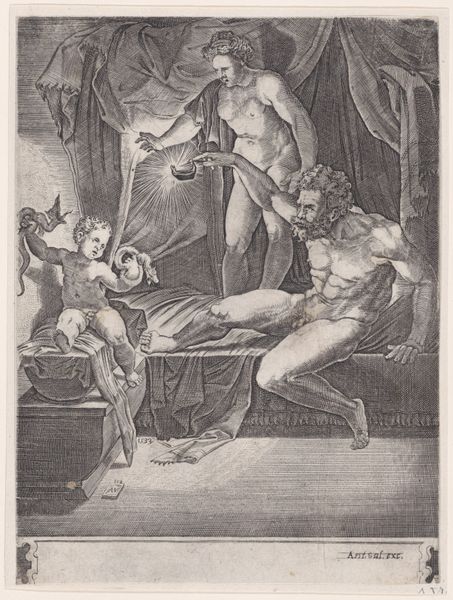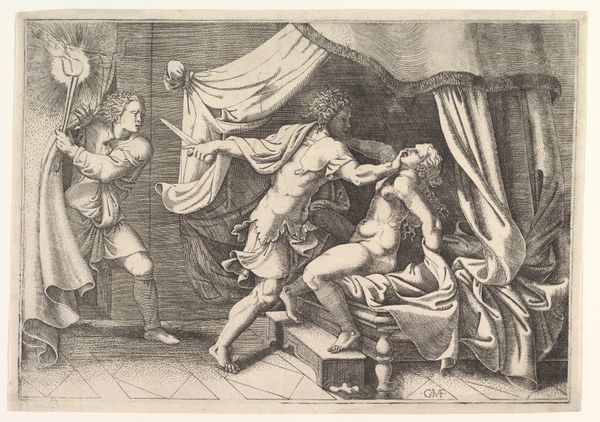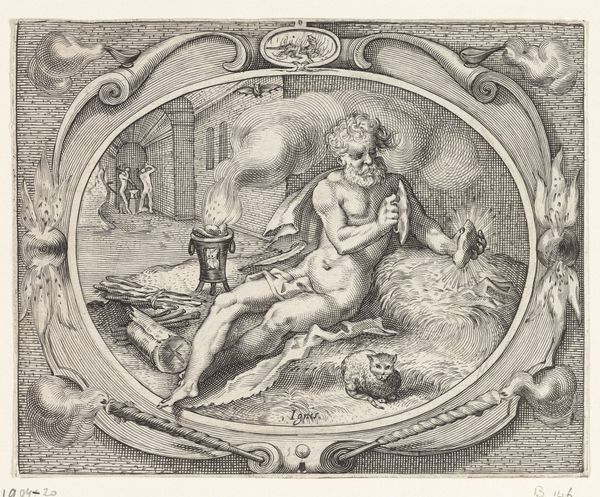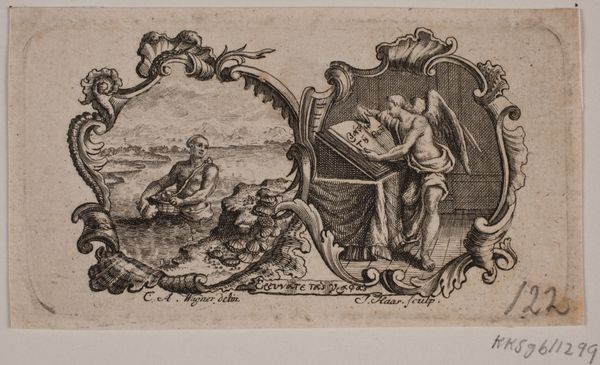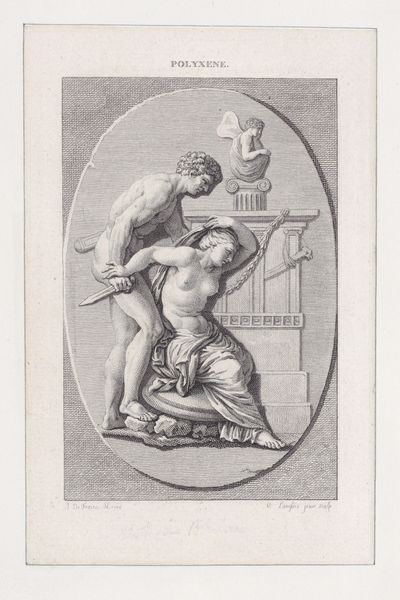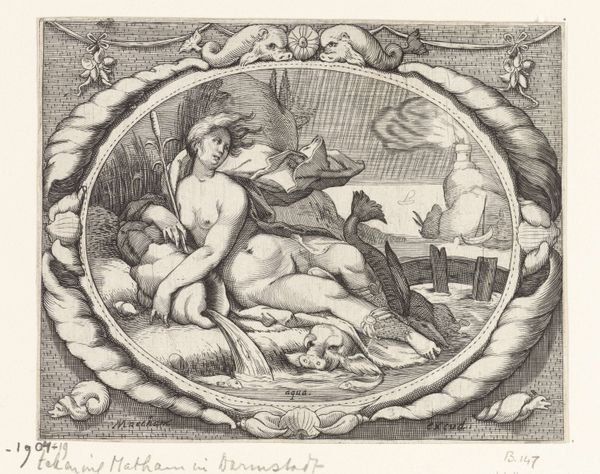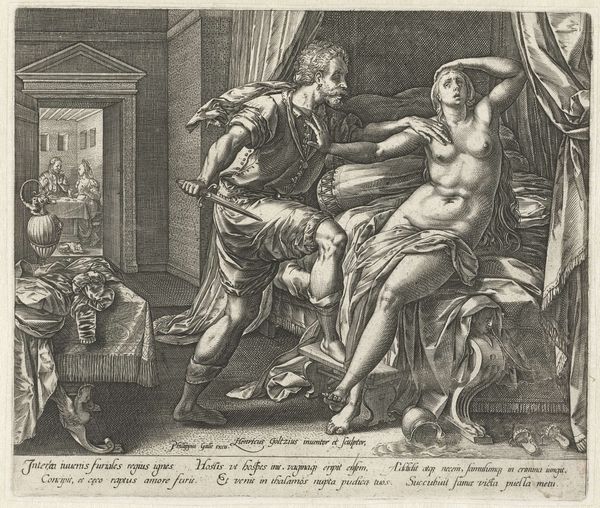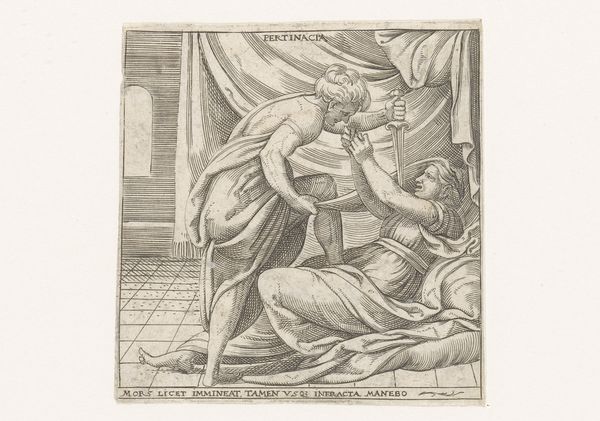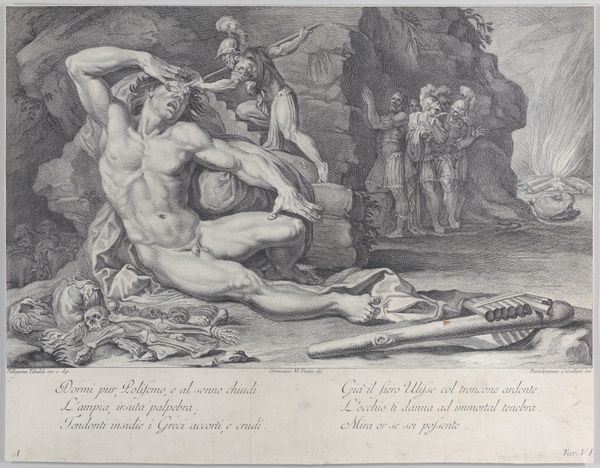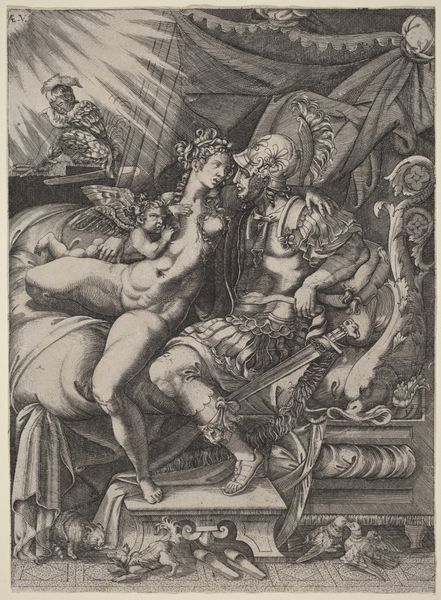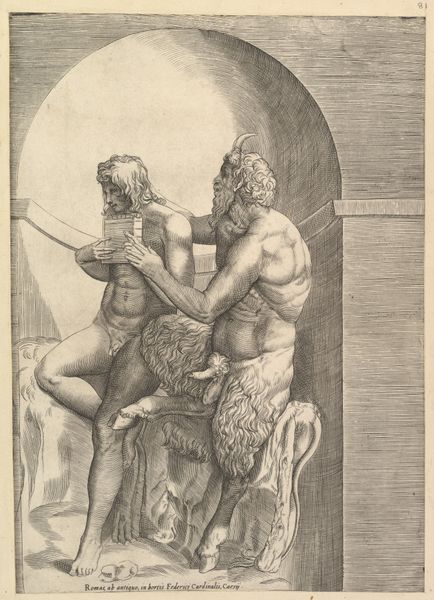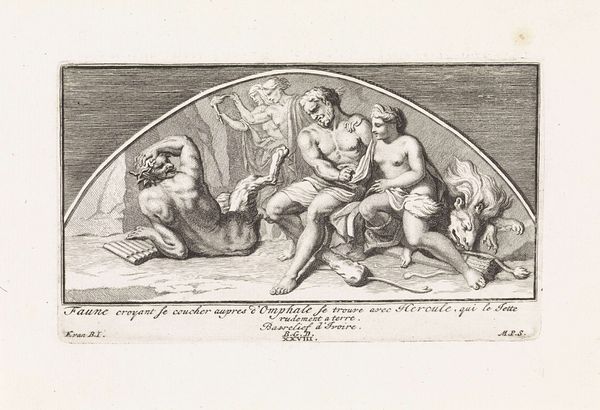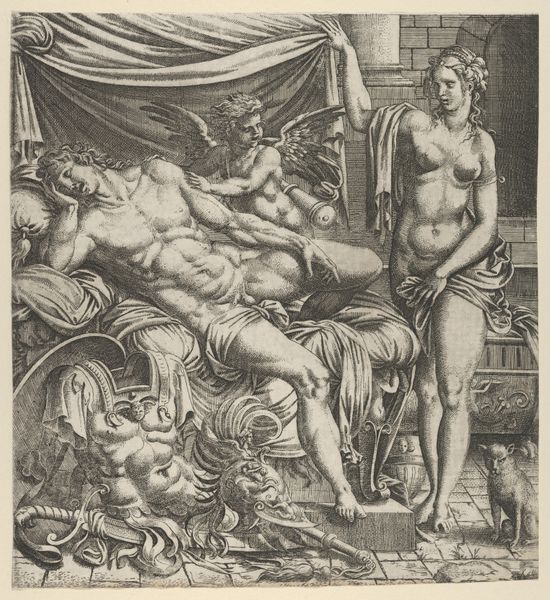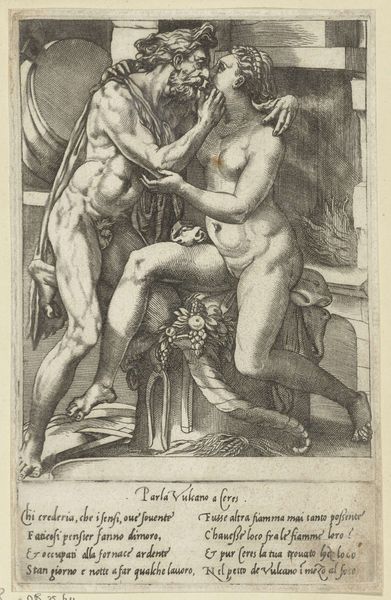
print, engraving
#
baroque
# print
#
old engraving style
#
figuration
#
line
#
history-painting
#
engraving
#
miniature
#
erotic-art
Dimensions: height 178 mm, width 219 mm
Copyright: Rijks Museum: Open Domain
Editor: Here we have Jan Collaert II’s print, “Adultery of Venus and Mars,” dating from between 1576 and 1628. The line work is incredibly detailed and precise. The figures intertwine dynamically, but what strikes me most is the frame itself - it gives an overall sense of deliberate enclosure, a stage-like effect. How do you read the composition? Curator: Your point on the framing is astute; it certainly serves to contain and direct the viewer's gaze. I am particularly struck by the interplay of lines and the deliberate arrangement of figures within this constructed space. Consider the texture achieved purely through linear variation – notice how Collaert modulates line thickness and density to suggest form, volume, and even different materials. Observe, for instance, the contrast between the crisp, sharp lines defining the weaponry versus the softer, more flowing lines depicting the flesh. What does that opposition evoke? Editor: Well, the sharp lines, particularly of the shield and sword, do emphasize the military aspects associated with Mars. It gives a sense of contrast or almost friction with the more sensual lines associated with the figures. The angular versus the rounded feels very intentional, as you suggest. Curator: Precisely! And beyond that immediate visual dichotomy, we can delve into the very structure of the composition itself. Look at the deliberate imbalance – the concentration of detail on the left side of the image compared to the relative openness on the right. This is no mere accident. It compels our eye to perform a visual dance, moving between zones of complexity and relative simplicity, creating an element of dynamism and challenging us to reconcile these contrasting visual spaces within a unified whole. What does this deliberate spatial tension suggest to you in terms of Collaert's intentions? Editor: That's an interesting point! The visual dance gives more energy to an image depicting, let's face it, a somewhat static moment. It does invite me to think about what Collaert wanted us to consider about balance and imbalance, order and disorder, in relation to the characters' actions and how they upset the 'natural' or 'moral' order. It changes my perception of it. Thank you for this analysis! Curator: My pleasure. Remember, the artist invites not only our gaze but our interpretation.
Comments
No comments
Be the first to comment and join the conversation on the ultimate creative platform.
